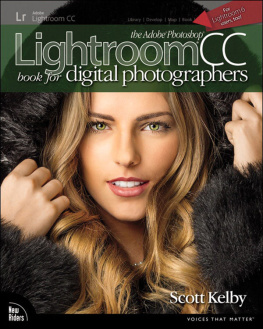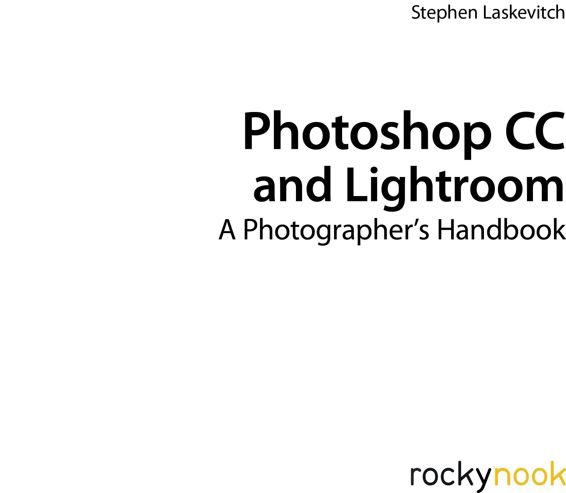Laskevitch S. - Photoshop CC and Lightroom: A Photographers Handbook
Here you can read online Laskevitch S. - Photoshop CC and Lightroom: A Photographers Handbook full text of the book (entire story) in english for free. Download pdf and epub, get meaning, cover and reviews about this ebook. genre: Computer. Description of the work, (preface) as well as reviews are available. Best literature library LitArk.com created for fans of good reading and offers a wide selection of genres:
Romance novel
Science fiction
Adventure
Detective
Science
History
Home and family
Prose
Art
Politics
Computer
Non-fiction
Religion
Business
Children
Humor
Choose a favorite category and find really read worthwhile books. Enjoy immersion in the world of imagination, feel the emotions of the characters or learn something new for yourself, make an fascinating discovery.
- Book:Photoshop CC and Lightroom: A Photographers Handbook
- Author:
- Genre:
- Rating:4 / 5
- Favourites:Add to favourites
- Your mark:
Photoshop CC and Lightroom: A Photographers Handbook: summary, description and annotation
We offer to read an annotation, description, summary or preface (depends on what the author of the book "Photoshop CC and Lightroom: A Photographers Handbook" wrote himself). If you haven't found the necessary information about the book — write in the comments, we will try to find it.
Adobe Photoshop and Lightroom are central to almost all photographic workflows. Each new version of the software is a milestone in the development of these vital imaging tools, and the 2014 releases are no exception.Photographers often feel overwhelmed when starting with Photoshop; the sheer number of tools and options make it difficult for the novice and intermediate user alike. There is no shortage of instructional books, yet very few direct the user to the most significant aspects of the program in a way that reflects a real workflow for the photographer.Focusing on the critical elements of a workflow rather than covering every arcane feature, this book is designed to get you working quickly in these applications. Along the way, the various applications are presented side-by-side so that a user of one may learn how to use the other: a kind of workflow Rosetta Stone. Or, if youre new to it all, this book will be your roadmap, helping you decide which way to go.In addition to the essential features of these programs, Laskevitch covers new features specific to the new releases, including:
Lightroom mobile;
Dramatically improved RAW image processing, including the new Radial Filter and retouching of irregular shapes;
Photoshops Improved Blur Gallery (Tilt-Shift, Iris, Field. and Radial Blur tools), Add selective focus, and bokeh effects;
Recomposing or retouching photos with even more content-aware editing and retouching tools;
Automatic straightening of image content;
Camera shake reduction;
Improved perspective correction;
Broader video support.This book is based on Lightroom 5, the current version at the time of writing. With the release of the next version of Lightroom, readers of this book may sign up to receive a free PDF by the author that will cover whats new.Adobe Certified Instructor Steve Laskevitch has leveraged his experience as a teacher and practitioner to create a guide that provides a clear and effective workflow for editing photographs in the 2014 release of Photoshop CC and its companions Bridge, Camera Raw, and Lightroom 5. iPAD Amazon Kindle, PC , Cool Reader, Calibre, Adobe Digital Editions
Laskevitch S.: author's other books
Who wrote Photoshop CC and Lightroom: A Photographers Handbook? Find out the surname, the name of the author of the book and a list of all author's works by series.













